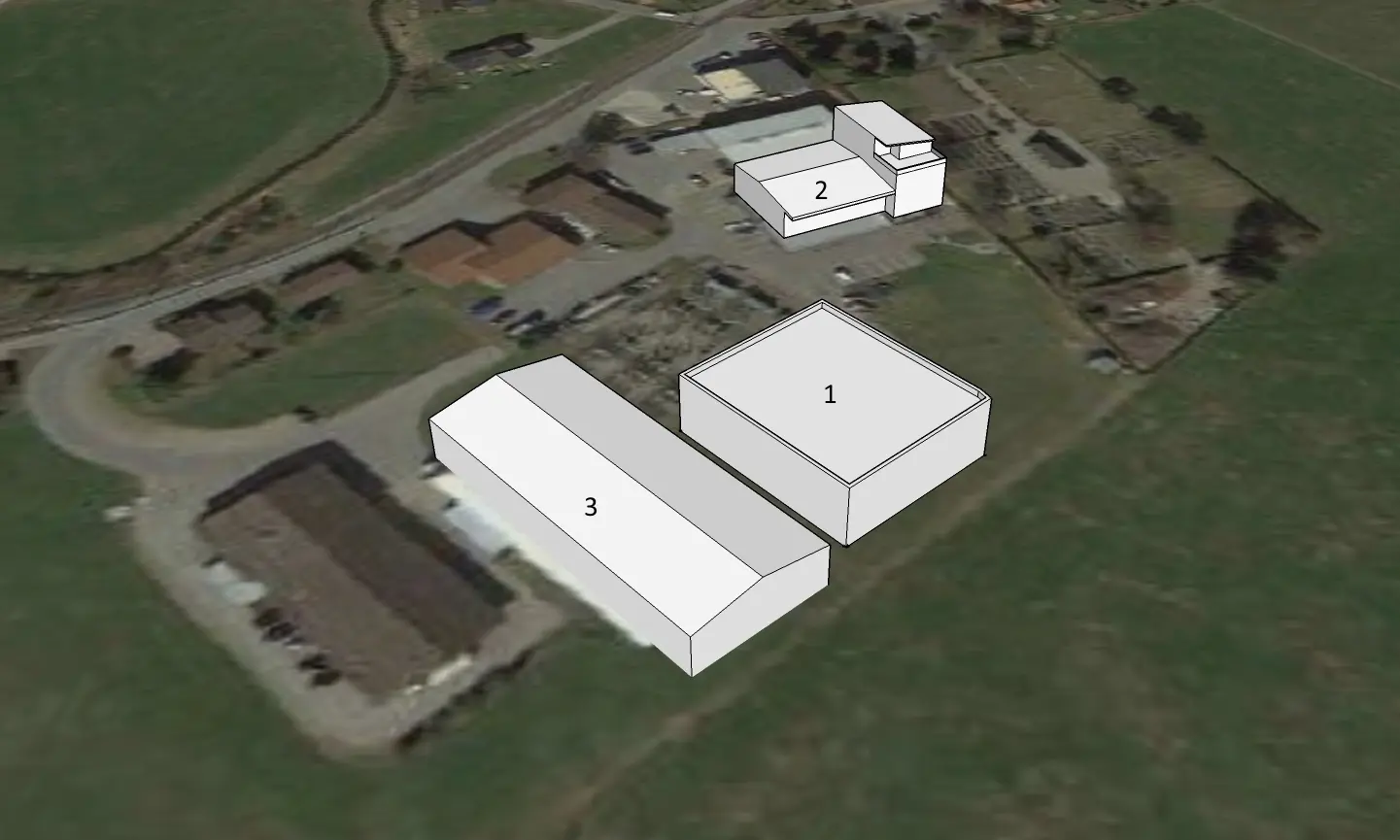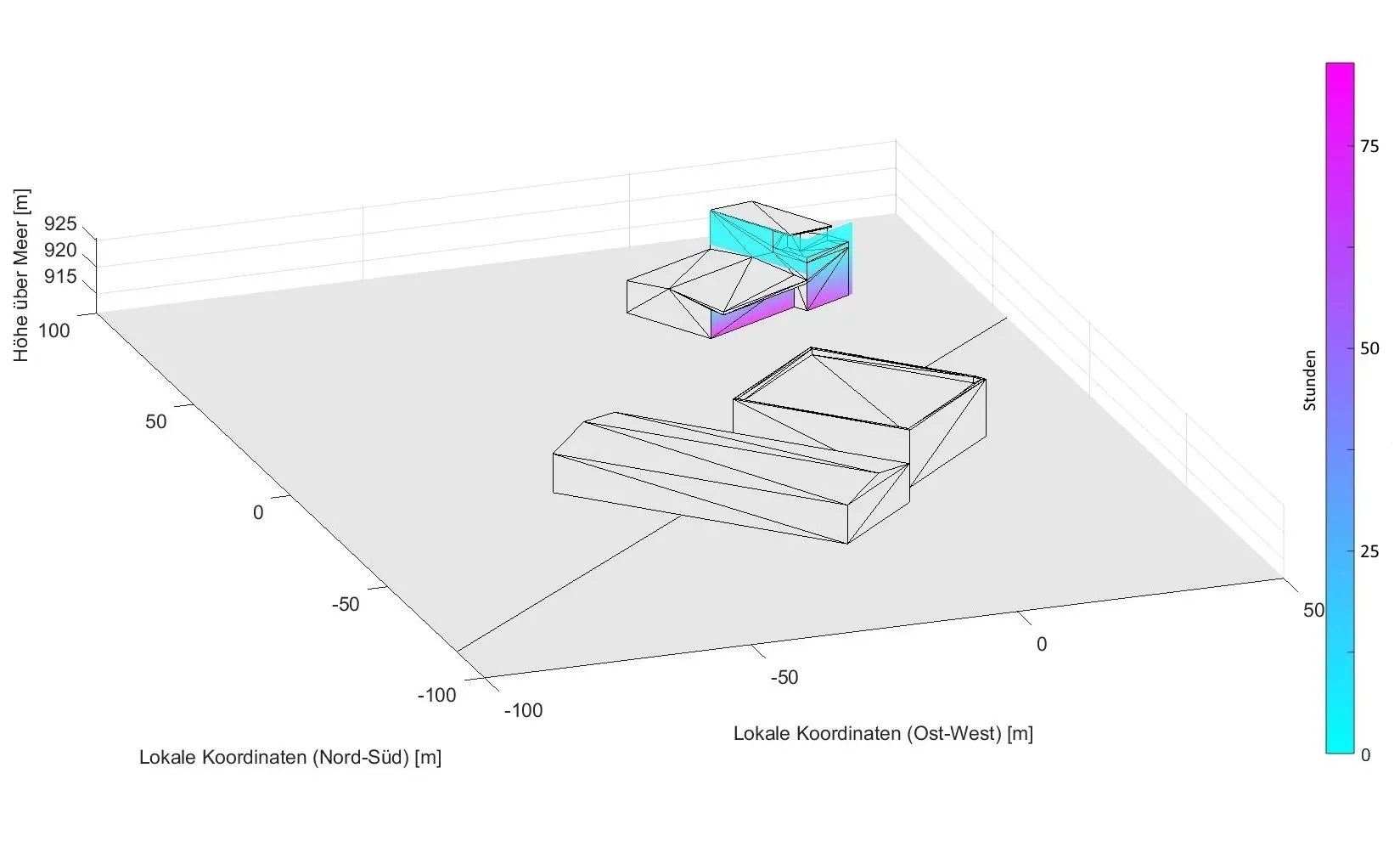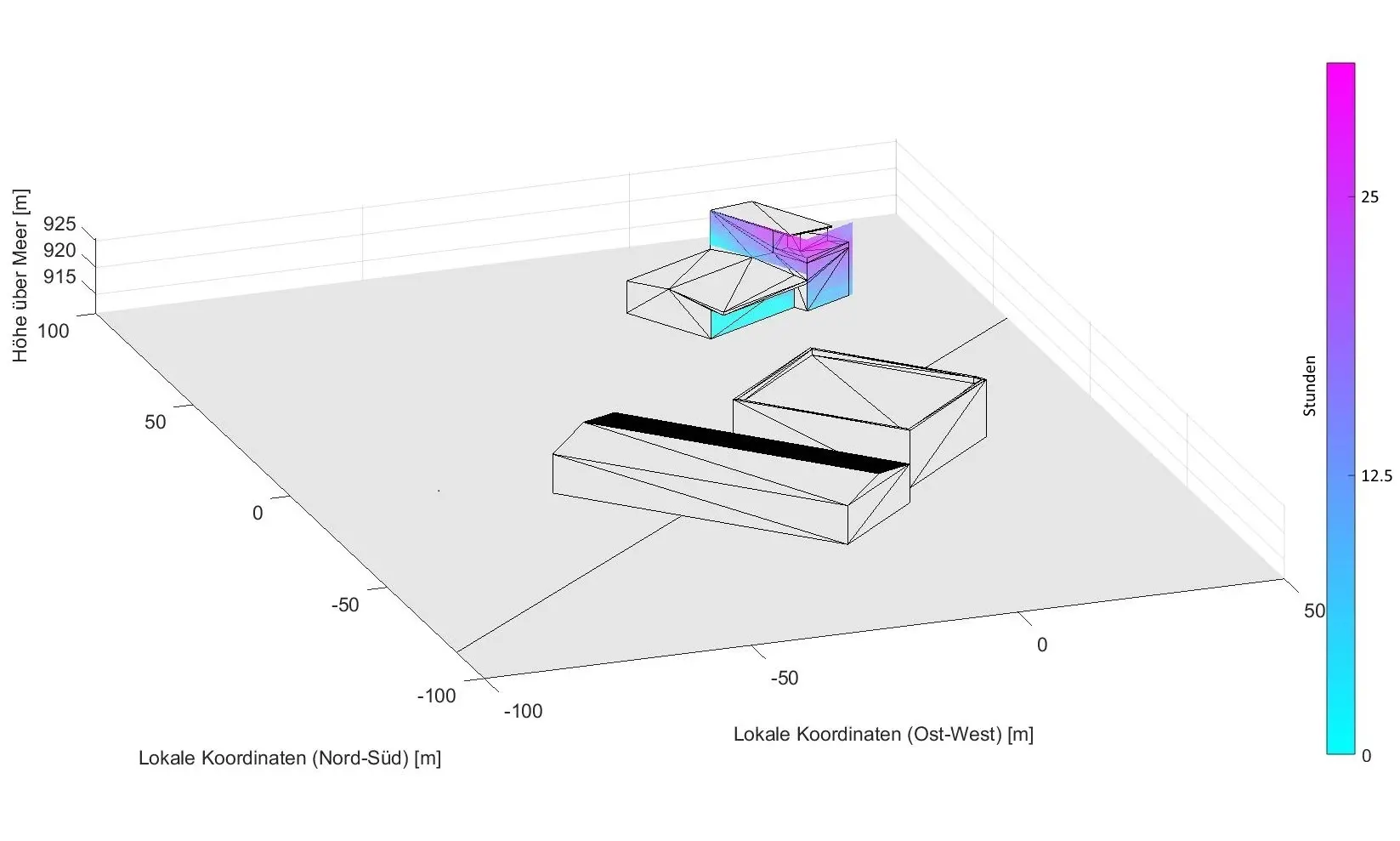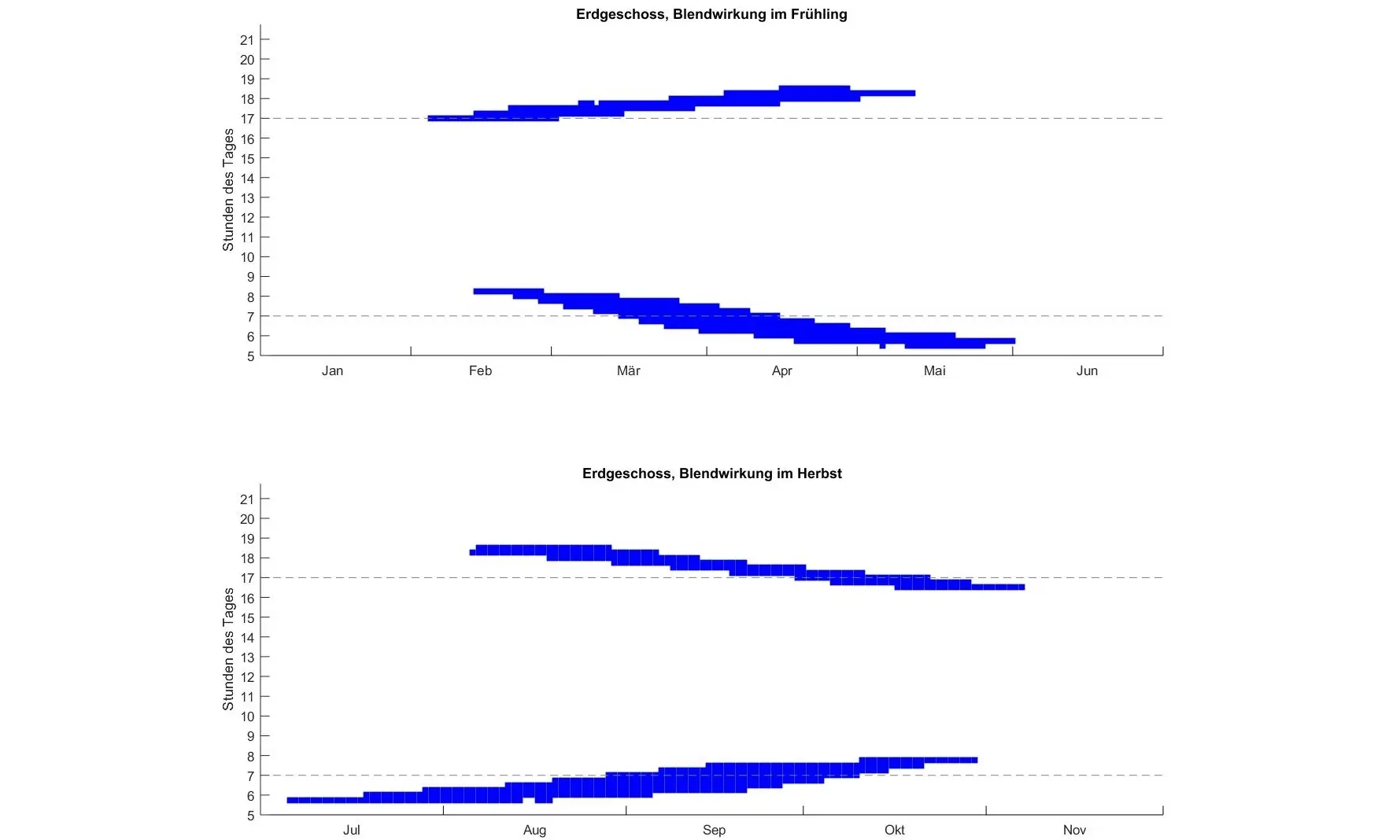Glare effect of PV systems
The construction of PV systems in residential areas often has an impact on the neighbourhood. Residents fear that the system will reflect the sun and cause a disturbance. To assess this, the Renewable Energies Research Group has developed a tool for calculating the glare effect using 3D building models.
When St. Gallisch-Appenzellische Kraftwerke AG (SAK) planned to build a data centre, the aim was to generate as much of the energy required for its operation as possible using solar panels. Accordingly, the plan was to cover not only the roof but also the façade of the building with panels. A resident whose building is used for both work and living expressed concern that the panels would reflect the sun and interfere with the use of his building. The fact that the existing photovoltaic system on the north-east roof of the nearby cheese dairy causes glare on many afternoons added weight to this argument.
Software tool enables 3D modelling
In order to investigate the reflections of planned photovoltaic systems, the Renewable Energies research group has developed a tool that calculates the position of the sun and the resulting possible reflections over a period of one year. When applied to the above-mentioned case, the first step was to recreate the various buildings in the 3D programme SketchUp (Fig. 1). Building 1 is the planned SAK data centre. The north-east and north-west facades, which are not visible in the illustration, are to be completely covered with solar panels. Building 2 is the factory or residential building of the concerned resident, and Building 3 is the cheese dairy, on whose north-east roof a solar system is installed, which dazzles the users in Building 2 at certain times.
Maximum theoretical glare effect
The software calculates the position of the sun for every quarter of an hour of the year and checks which panels are exposed to sunlight. The reflection on the panel surface is calculated for these panels and it is determined whether it hits an area of building 2. In a final step, it assesses whether the reflection is prevented by the surroundings, i.e. whether there is another building or other obstacles between the panel and building 2. If this is not the case, the corresponding building area (divided into 0.5 m² rectangles to represent the situation as accurately as possible) experiences glare during this quarter hour.
The result of the calculations is shown in Figure 2, which displays the annual duration of a theoretical glare effect in colour. The hours indicated represent an upper limit, as the calculations determine the maximum glare effect and are therefore based on the maximum possible duration of sunshine per day. Clouds are not usually taken into account for such assessments, even if this would be possible with the software.
Data analysis provides clarification
In the case under investigation, it has been shown that the residents of the building (on the top floors) will not be affected by the planned data centre. On the ground floor, glare is possible for a maximum of 80 hours per year.
However, a more detailed analysis of the times (Fig. 4) shows that the reflections occur mainly at off-peak times, i.e. outside normal working hours (shown in grey dotted lines). The planned data centre is to be built between the existing cheese dairy and the neighbouring property.
The same software was therefore used to investigate whether and to what extent the new data centre would reduce the glare currently caused by the PV system on the roof of the cheese dairy. It was found that the data centre would prevent the existing glare effect on the residents of the upper floors of building 2 for around 30 hours per year (Fig. 3). The prevented reflections also occur in the afternoons, when the residents are usually at home.
Overall, the study showed that the planned construction improves the situation for the residents of building 2 despite the solar panels on the façade. The residents therefore decided not to object and the building application was successfully processed.



